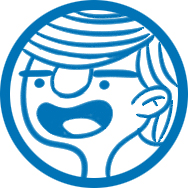Some Bugs Are Powerful But Situational
So the next set of bugs that we should talk about is probably the most interesting to me. They’re bugs that affect competitive gameplay, but don’t wildly alter the underlying game in a systematic way. Since we both come from a 3rd Strike background, maybe we should talk about Urien unblockables first?
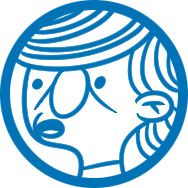
Street Fighter III: 3rd Strike - Projectile Unblockables
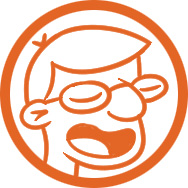
Yeah I think that’s a good way to start. The difference between bugs in this category and the previous one is kind of subjective, but we kinda classify these as either very specific to a few characters, or “important but not required learning” to play the game, and I think left-right projectile unblockables in Street Fighter III: 3rd Strike fit that category.
It’s a fairly easy bug to explain. When you throw a projectile in 3rd Strike, the opponent must block away from the direction it was thrown, and not the opposing character like most modern games. The end result is that if you can somehow throw a projectile and switch sides with the opponent, and attack them with a physical hit at the same time as the projectile hits from the other side, the sequence becomes unblockable because you cannot block both left and right at the same time.
Right. Urien is a character that can throw out a super called Aegis Reflector, which is basically a big stationary projectile that kind of floats there for a while and then disappears when a timer is up (or the opponent is hit 6 times). Since all projectiles have an inbuilt directionality in Third Strike, he’s a natural candidate for this bug - the idea is that you get a hard knockdown, he throws out the Aegis, and then somehow crosses up your body and hits you on the opposite side at the same time as the Aegis Reflector.
STREET FIGHTER III: 3RD STRIKE
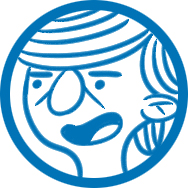

You would think so, but actually no! Version B was more or less wholly rejected by the 3rd Strike community. Every arcade tournament since 2000 has been played on Version A, and if a console version used Version B as its codebase, it was considered unplayable.
We talked last page about bugs that kind of ‘fix’ a design problem that the developers didn’t even know they had, or unintentionally spice up a game’s appeal, and I think Urien unblockables are the prime evidence for a bug that had that effect. Because the top tier in 3rd Strike is so strong, Version B Urien basically stood no chance. But give him unblockables coupled with high execution - in order to put Aegis on top of a character and side switch, it requires intense game knowledge and mastery of a difficult skill called charge partitioning - and suddenly you have a fan favorite character.
STREET FIGHTER III: 3RD STRIKE
Urien is an extremely fun character to play, personally speaking - and when you watch someone who’s a master with the character, like RX, you’re always in for a treat. His myriad of unblockable setups off seemingly any hit is a huge part of that appeal. Actually, there’s a really sick moment that should be required viewing for anyone with a passing interest in fighting game history:
STREET FIGHTER III: 3RD STRIKE


This is truly one of the great historic fighting game clips, in my opinion. To really understand its impact, you have to think back to what the FGC landscape was like in 2002. There was no Youtube, no social media, and Japanese players rarely traveled because Evo was only just starting. This was the first time, to my knowledge, that the rest of the world had even heard of Tokido, who might go down as the greatest fighting game player of all time. Meanwhile, Justin has a reputation of being invincible in every game he touches to local American audiences.
So when Tokido, a completely unknown Japanese player, picks a character that nobody thinks is very good, and uses a super that nobody knows anything about, the reaction to seeing corner unblockables against Chun-Li for the first time is just incredibly electric. You can just hear the bewilderment and energy in the voices of the fans watching. Exciting moments happen in fighting games all the time, but due to the ubiquity of tech being shared on social media these days, I really do think moments specifically like this are unlikely to ever happen again.
In any case, the point is that Urien became a playable character because of this bug, but didn’t become so overwhelming that he dominated the game - even with it’s help, he belongs in the second tier of characters under Chun and Yun, who ran that show. He goes from ‘will never be picked’ to ‘can compete’, which is probably the ideal place for a character that requires a programming oversight to play competitively.
STREET FIGHTER III: 3RD STRIKE
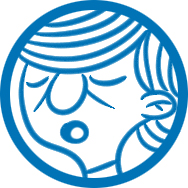
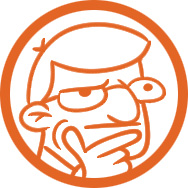
It’s also important to note that Urien is not the only character who can make use of this bug. Oro can also use his giant goop ball super to cause hard knockdowns and cross up opponents, and like Urien, it requires a lot of game knowledge to know which setups work on which characters, as 3rd Strike is a game with lots of funky hitboxes. That said, Oro is still quite a bit lower on the tier list than Urien, and some players don’t even choose to use this super in matches, depending on the matchup.
STREET FIGHTER III: 3RD STRIKE
Street Fighter IV - Unblockable Ultras
Unblockables are actually something that come up a lot in this category, actually. For instance, there are the Street Fighter IV unblockable Ultras, which were discovered only very late in that game’s lifespan (they were patched out immediately in the followup, Super Street Fighter IV).
STREET FIGHTER IV
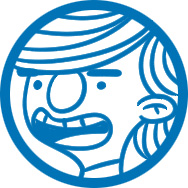

Because they were found so late before Super Street Fighter IV, we actually never really saw these used in tournament matches all that much, but I have no doubt that if the original SFIV was played for another year, they would have been extremely commonplace, especially in matchups where escaping the ultra hit was difficult or impossible. And those escapes were always baitable and then usually punishable with ultra on reaction anyway. Because you can get two ultras per round with smart play, you are basically just forcing your opponent to take small (or sometimes big) damage for free. Notably, extremely top tier characters like Sagat and Seth (console only) had easy setups for these, so the rich get richer.
That’s true. The top tier in that game (Ryu, Sagat, Seth, Akuma) all had fireballs anyways, so they had the opportunity to actually use this glitch (well, except Akuma, since his Ultra was a grab). On the other hand, Rose finally got to actually use her garbage Ultra for something. Generally, though, I feel like it would have stratified the tier list even further and made the game worse to play. I seem to recall that Seth’s unblockable Ultra setups were even safe if you somehow screwed them up.
STREET FIGHTER IV

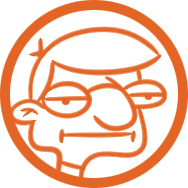
Man, Seth was a good character in vanilla. They nerfed him pretty severely in Super and he was still a powerhouse.
Super SFIV: AE 2012 - Proximity Guard OS
Speaking about bugs that were found late into a game’s life, in 2013, during the height of Super Street Fighter IV: Arcade Edition ver. 2012 (yes that’s the real name), people found a bug called “proximity guard OS”. Moves in most 2D fighting games (with Injustice and other NRS games being the main exceptions) have something called a “proximity guard” hitbox. It’s usually quite long horizontally, and if you are standing in this invisible box, your character will stand still and try to block the attack, rather than walk backwards, if you hold back. If you play Street Fighter V and have been forced to block Laura's projectile from long range, instead of walking out of the way, you know what proximity guard is.
The way this bug works is that, if you whiff a normal attack and then input another command for a special, super, or ultra in a veeery specific way, that next command will only come out if your opponent was standing in the proximity box for your first attack AND tried to attack you. Basically, he would get hit by your ultra if and only if he did something that the ultra could go through, and if he didn’t attack, nothing would happen. It’s… really silly.
SUPER STREET FIGHTER IV: AE 2012
For instance, you could play Gen and go for a sweep - if the sweep misses, and your opponent tries to press a button after you, your proximity guard OS triggers and they get to eat a raw ultra for their trouble. However, this bug had two caveats. First, it’s actually really hard to do, and if you screw it up by being a couple frames late you end up doing your ultra anyways (and probably losing the round when they block it). Secondly, you could actually bait many proximity guard ultras by whiffing a very fast normal (say, a standing jab) instead of actually trying to whiff punish - the (slower) ultra comes out and you can hopefully block in time.
Because of these factors, proximity guard OS was more of a curiosity than a tournament-standard play. So despite it being very powerful, I think it didn’t affect the competitive run of that game in a particularly meaningful way.


They were so difficult to do that I think only famous European tech monster Alioune had the guts to pull it off in any real tournament matches. The punishment for being even slightly wrong on your input was usually a lost round. That said, I do remember the outcry (perhaps justifiably so?) at the fact that this bug was not patched in Ultra Street Fighter IV, the final version of the game. However, in the end, most players just found it too difficult to implement into their gameplan, and they had already been playing the game for 4 or 5 years by this point anyway.
Super SFII Turbo - Stored Commands
Let’s get back to some bugs that really did affect their games, and have a look back at Super Street Fighter II Turbo. In that game, there are a handful of interesting bugs to explore, so let’s start with E. Honda’s stored Oicho throw. To understand the bug, you have to understand that the command for the throw is ‘half circle back + P’, and that you can negative edge the command (you can release the P button to activate the move).
Since the throw has no whiff animation (E. Honda doesn’t do anything if the throw doesn’t successfully connect), using negative edge to do the command is really powerful - you either throw your opponent, or nothing happens.
However! There’s also a bug in the game that allows Honda to ‘store’ the motion by inputting the half-circle back, and ending in down back. So long as you hold down-back, the instant you press (or release) a punch button, the game will accept this as a valid Oicho throw input. If you sit next to your opponent and just store the charge (while blocking!), you can release all three P buttons and get three free throw attempts. Kinda gross.
SUPER STREET FIGHTER II TURBO

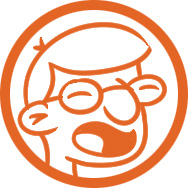
There’s another similar bug in ST where Chun (and other characters with charge supers, like Honda) can input the motion for her super attack, which is charge back, forward, back, forward + Kick. After doing the charge and the forward back forward input, as long as she continues to hold forward, she can press Kick at any time to do her super.
SUPER STREET FIGHTER II TURBO
Both of these bugs (among many others in ST) really affect the game. Chun’s stored Super is something you’ll have to deal with basically every round against her, so you can’t ignore it. I think that game is an interesting case study - a real mess, but fun as hell anyways, and you still get lots of interesting character representation both casually and competitively. The bugs in isolation sound absurd but when you play the game they aren’t totally overwhelming. It just kind of works.

King of Fighters XIII - Alternate Guard

That reminds me of another bug that sounds absurd - Alternate Guard in King of Fighters XIII (as one example, it’s actually in every KoF game except KoF14). Basically, after blocking an attack, as long as you repeatedly switch between standing and crouching guard, the game thinks you are perpetually in block stun, which means you can’t be thrown.
KING OF FIGHTERS XIII
I think this case speaks towards how easy it is to make a bug look really stupid and game-changing in an isolated Youtube video, when the effect it has on the gameplay might actually be quite minimal when you look at all the systems as a whole. I think it’s important not to automatically freak out when a bug is found (no matter how silly the Youtube looks, or how upset other players are getting), but rather you should take a more pragmatic approach as to how the bug will actually impact the game.
Yes, absolutely. Don’t panic. Many bugs, even ones that affect gameplay, won’t totally break the game or make hamburgers eat people.
Another bug that looks totally crazy when you examine it in isolation is the Juggernaut Power Up glitch in Marvel vs Capcom 2 - where if you use Juggernaut’s Power Up move (which enhances his damage output for what it supposed to be a very brief period of time) and tag him out, he’s now permanently in that state. That sounds nuts, because now he does absurd damage forever. However, Juggernaut is actually a totally garbage character outside of this one glitch so it turns out that it didn’t matter at all. Poor guy.


There will always be more examples than is possible to talk about… like the fact that, in Mortal Kombat 9, player 1 always wins when attacks trade (something that seems pretty crazy to me). But like the last page, I think it’s not very easy to prove that every bug in this category is automatically detrimental to a game. It’s a very case-by-case thing, and even in the 3rd Strike unblockable case, the devs did try to patch out behavior but the fans didn’t agree!
I think up to now, we have talked about specific bugs that have been programming mistakes or oversights, but there’s still a really important list of behaviors that are not really ‘mistakes’, but rather things that make perfect sense within the intended rules of the game, but ended up affecting matches in unique ways.
Yeah - let’s get into that on the next page. I think it would be fair to call them ‘mechanical oversights’ or something. Unintended behavior that’s actually just the logical extension of intended behavior.
